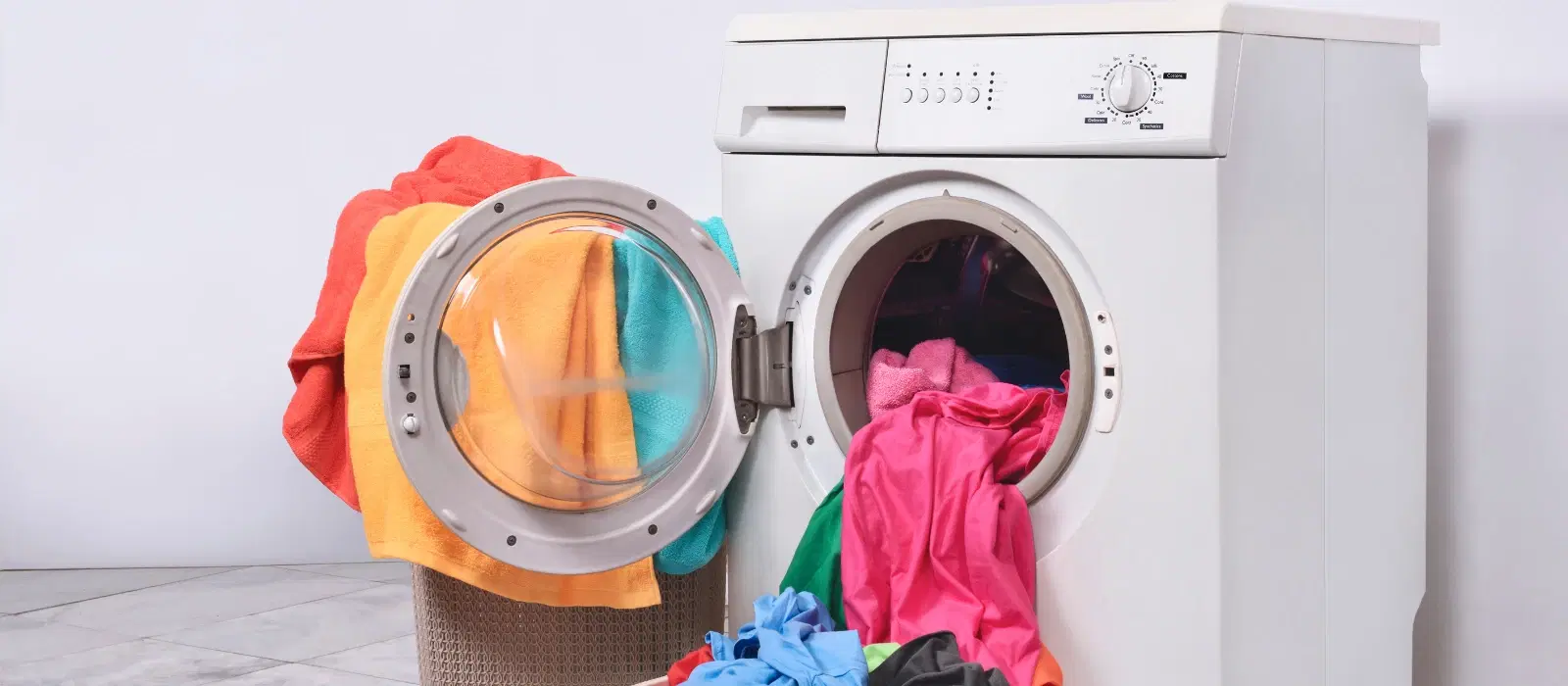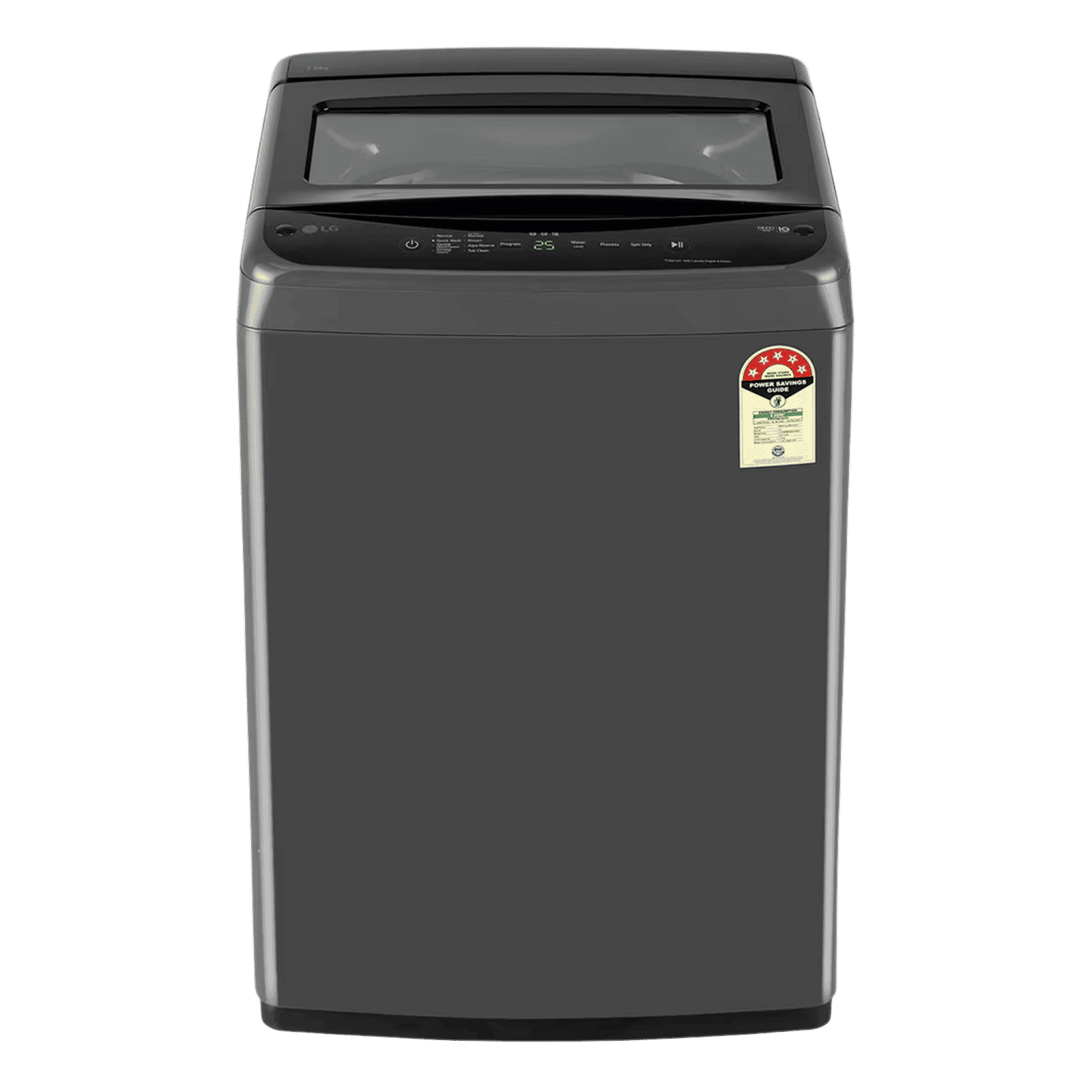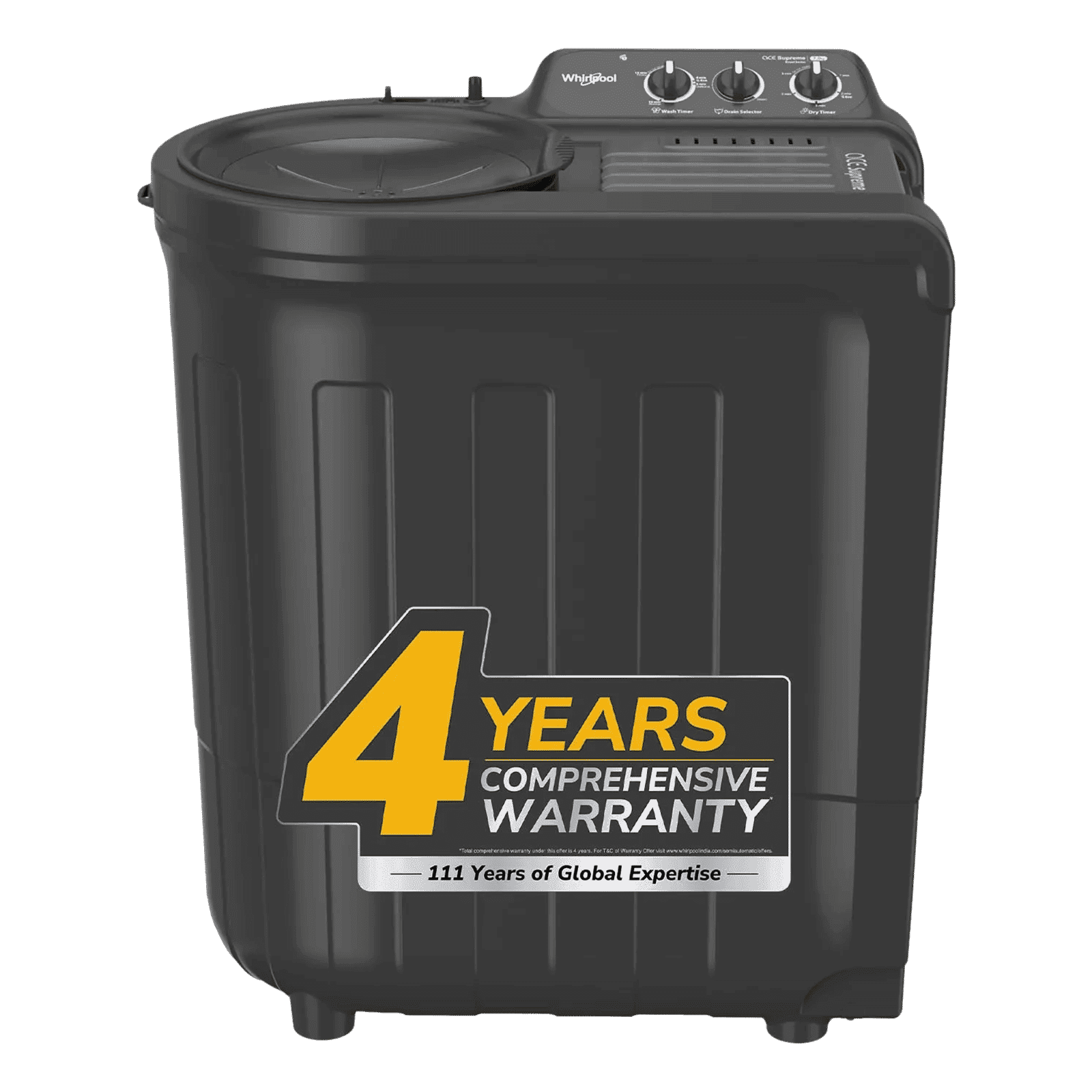
Home Appliances
•04 min read

Buy LG 7 kg 5 Star Inverter Fully Automatic Top Load Washing Machine (T70VBMB4ZD.ABMQEIL, Smart Diagnosis, Middle Black) online at best prices from Croma. Check product details, reviews & more. Shop now!
Imagine pulling freshly washed clothes from your washer, only to find them damp and dripping—frustrating, isn’t it? Many homeowners encounter this common issue when their washing machine does not dry clothes completely. When you shop for home appliances on Tata Neu, you not only enjoy high-quality products but also earn NeuCoins and benefit from Express Delivery for orders placed before 6 PM. In this post, we address the questions around why is my washing machine not drying properly. You will learn about common issues like a faulty spin cycle performance, blocked drainage, and imbalanced loads, along with troubleshooting tips that can help restore your washer’s efficiency.
A major reason why a washing machine might leave clothes damp is a malfunctioning spin cycle. When the spin cycle does not operate at optimum speed, clothes retain more water. This issue not only affects washing machine drying issues but also leaves you with extra effort when it comes to drying your clothes later.
Another common problem is a blocked drainage system. Over time, lint, detergent residues, or small objects can clog the drain hose or filter, preventing water from being removed properly. As a result, you experience scenarios where your laundry stays wet after wash, which can be particularly frustrating during rush hours.
Begin by inspecting the spin cycle. Ensure that your machine is set to a high spin speed mode if available. Listen carefully for irregular sounds during the cycle as they may indicate a rotation issue. Confirm that the machinery is free of obstructions and easily adjusts to the weight distribution of the load. This is key when facing issues like spin dryer not working, which directly affect the removal of water from your clothes.
Check for blockages by examining the drain hose and pump areas. A thorough cleaning of the drainage system can alleviate issues related to wet clothes after washing. Pay close attention to any lint or debris build-up that might hamper the drainage process and ensure your filter is regularly cleaned. Incorporating regular washing machine troubleshooting can help resolve these common drainage issues.

Buy Whirlpool 7.5 kg 5 Star Semi Automatic Washing Machine with In built Scrubber (Magic Clean, 30291, Grey) online at best prices from Croma. Check product details, reviews & more. Shop now!
Overloading your washer or placing items unevenly may cause the machine to struggle with effective water extraction. Consider checking the load balance; an imbalanced load can lead to reduced efficiency and contribute to why washer leaves clothes damp. Adjusting load size and distribution during each cycle can make a significant difference.
Expert Tip: "Did You Know? Overloading your washing machine can cause imbalance during the spin cycle, leaving clothes damp after washing. Always follow the manufacturer’s guidelines for load capacity to ensure optimal performance."
Keeping your washer’s filters and drainage system clean is essential. Regular maintenance not only extends the life of your appliance but also ensures that it runs efficiently. A periodic cleaning routine prevents the buildup of residue that can impair the machine’s ability to remove water effectively.
Installing your washing machine correctly and using it as per the manufacturer’s recommendations can prevent issues. Follow the guidelines for load usage to avoid any imbalance or unnecessary stress on the machine. This practice minimizes the risk of encountering problems such as why is my washing machine not drying properly for front-load or top-load machines.
If troubleshooting efforts do not resolve the issue, it might be time to consult a professional. If these troubleshooting tips do not resolve the issue, consult your washing machine’s user manual or contact a verified professional for a detailed inspection. Signs that point to a need for professional intervention include persistent dampness in clothes despite proper load and spin cycle adjustments, unusual noises, or irregular water drainage. If diagnosing and fixing common issues does not help, a detailed inspection by an expert may be the solution.
Select a repair service that is known for reliable after-sales support and has robust experience with appliance troubleshooting. A professional can offer precise diagnostics and repair the issue effectively, ensuring that your appliance performs optimally and lasts long, so you can avoid future frustrations with damp laundry.

Buy IFB 5.5 kg 5 Star Fully Automatic Front Load Dryer (TURBO DRY EX, Lint Filter, Silver) online at best prices from Croma. Check product details, reviews & more. Shop now!
This could be due to a faulty spin cycle, clogged drainage system, or an overloaded washer. Check these areas to identify the issue.
Clothes may remain wet due to improper spinning, drainage problems, or imbalanced loads. Make sure your washer is not overloaded and is performing the spin cycle correctly.
If you are using a washer-dryer combo, the issue might be related to blocked vents, insufficient airflow, or a malfunctioning heating element. Regular maintenance of vents and filters can help.
This could be caused by overloading the dryer or using incorrect settings, along with a clogged lint filter that restricts airflow. It is important to follow load guidelines and clean the filter regularly.
Front-load washers may experience drying issues due to low spin speed settings, clogged filters, or imbalanced loads. Pay attention to these factors during troubleshooting for more effective drying.
Clothes that remain damp after a wash cycle can be both frustrating and inconvenient. By understanding common causes like spin cycle problems, drainage issues, and improper washer use, you can troubleshoot and resolve these drying challenges effectively. Regular maintenance and care can also prevent future issues. If simple tips do not solve the problem, contacting a trusted professional for appliance repair is a wise course of action. When you choose Tata Neu, you also gain access to trustworthy after-sales support and expert guidance, ensuring a seamless experience from purchase to maintenance. The expertise you gain from maintaining and troubleshooting your appliances can lead to more efficient and stress-free laundry days.